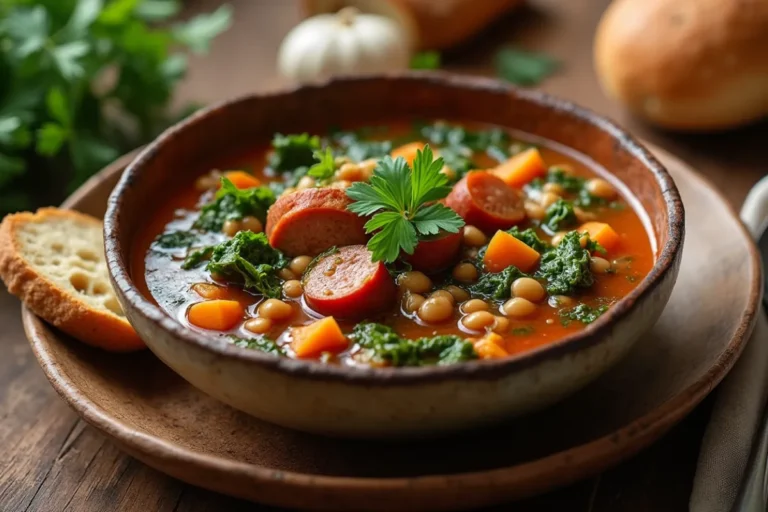How Do You Make Bone Broth That’s Rich in Flavor and Nutrients?
Bone broth isn’t just another kitchen staple; it’s a time-tested tradition that has taken the health and wellness world by storm. Whether you’re sipping it for its gut-healing properties or using it to enhance the flavor of your favorite recipes, learning how to make a bone broth that’s rich in flavor and packed with nutrients is essential. Here’s your ultimate guide to crafting the perfect batch of bone broth at home.
What Makes Bone Broth So Nutritious and Flavorful?
Bone broth owes its impressive nutrient profile to the slow and steady cooking process. By simmering bones for hours, you extract collagen, gelatin, and essential minerals like calcium, magnesium, and phosphorus. These nutrients contribute to joint health, digestion, and overall wellness. But flavor is just as important. The secret lies in using the right combination of bones, vegetables, and seasonings.
Ingredients You’ll Need for the Perfect Bone Broth
The beauty of bone broth is its simplicity. You can customize it based on your preferences, but there are a few staples you’ll always need:
- Bones: Chicken, beef, pork, or fish bones work well. Choose ones with connective tissue, like knuckles and joints, for maximum collagen.
- Vegetables: Carrots, celery, and onions add sweetness and depth to the broth.
- Herbs and spices: Bay leaves, thyme, and peppercorns are classics, but you can experiment with rosemary, parsley, or turmeric.
- Acid: Apple cider vinegar helps draw out minerals from the bones.

Here’s a quick reference for your ingredient list:
| Ingredient | Quantity |
|---|---|
| Bones | 2 lbs |
| Carrots (chopped) | 2 medium |
| Celery stalks (chopped) | 2 stalks |
| Onion (quartered) | 1 large |
| Garlic cloves | 3-4 |
| Bay leaves | 2 |
| Peppercorns | 1 tsp |
| Apple cider vinegar | 2 tbsp |
Preparing Your Ingredients for Maximum Flavor
Before you begin simmering, preparation is key. Start by roasting your bones at 400°F for about 30 minutes. This step caramelizes the bones, giving your broth a richer, deeper flavor. Meanwhile, chop your vegetables into large pieces. There’s no need for precision here; rustic cuts are fine since everything will be strained later.
Step-by-Step Guide to Making Bone Broth
Making bone broth at home is straightforward, but attention to detail makes all the difference. Here’s a step-by-step process to ensure success:
- Combine Ingredients: Place roasted bones and vegetables in a large stockpot. Add enough water to cover them completely, then pour in apple cider vinegar.
- Simmer Slowly: Bring the pot to a gentle boil, then reduce the heat to low. Simmer uncovered for 12–24 hours, occasionally skimming off any foam or impurities.
- Add Herbs: During the last hour, add fresh herbs like parsley or thyme for a burst of flavor.
- Strain and Cool: Once the cooking time is up, strain the broth through a fine-mesh sieve. Let it cool before transferring it to storage containers.
Pro Tips for the Best Bone Broth
- Choose the Right Bones: For chicken, use a mix of backs, necks, and feet. For beef, knuckles and marrow bones are ideal.
- Avoid Boiling: High heat can make your broth cloudy and reduce its clarity.
- Extend the Simmering Time: The longer you cook the broth, the more nutrients you’ll extract from the bones.

Nutritional Breakdown of Bone Broth
Bone broth isn’t just comforting; it’s a powerhouse of nutrition. Here’s a breakdown of its typical nutrient profile per cup:
| Nutrient | Amount |
|---|---|
| Calories | 40-50 |
| Protein | 8-10 g |
| Collagen | 7-9 g |
| Calcium | 20 mg |
| Magnesium | 15 mg |
These nutrients make bone broth an excellent addition to your diet, supporting everything from joint health to skin elasticity.
Storing and Using Your Bone Broth
Homemade bone broth can be stored in the refrigerator for up to five days or frozen for up to three months. Use ice cube trays to freeze small portions, making it easy to add a boost of flavor and nutrition to your meals. Here are a few creative ways to use bone broth:
- As a base for soups and stews.
- To cook grains like rice or quinoa.
- In sauces and gravies for added depth of flavor.
- As a warm, nourishing drink on its own.

Common Mistakes to Avoid
While making bone broth is simple, there are some common pitfalls to watch out for:
- Skipping the Roasting Step: This step adds significant flavor, so don’t overlook it.
- Using Low-Quality Bones: The quality of your bones directly impacts the flavor and nutrient content of your broth.
- Forgetting to Add Acid: Apple cider vinegar or lemon juice is essential for extracting minerals from the bones.
FAQ: How Do You Make Bone Broth That’s Rich in Flavor and Nutrients?
Q: How long should you simmer bone broth?
A: For the best results, simmer it for 12–24 hours. This allows for maximum nutrient extraction.
Q: Can you reuse bones for multiple batches?
A: Yes, but each subsequent batch will have less flavor and fewer nutrients.
Q: Is bone broth good for gut health?
A: Absolutely. Bone broth is rich in collagen and amino acids that support gut lining repair.
Q: What’s the difference between bone broth and stock?
A: Stock is simmered for a shorter time and focuses more on flavor, while bone broth is cooked longer for nutrients.
Q: Can I make bone broth in a slow cooker?
A: Yes, slow cookers are an excellent option for maintaining a low, consistent temperature.
Conclusion
Making bone broth at home is more than a cooking task; it’s a way to prioritize your health and elevate your meals. With the right ingredients and a bit of patience, you can create a flavorful, nutrient-packed broth that outshines any store-bought version. Start your journey to crafting the perfect bone broth today, and enjoy the benefits of this timeless kitchen staple.
Ready to give it a try? Share your bone broth experiences and favorite recipes with us—we’d love to hear your tips and tricks!







